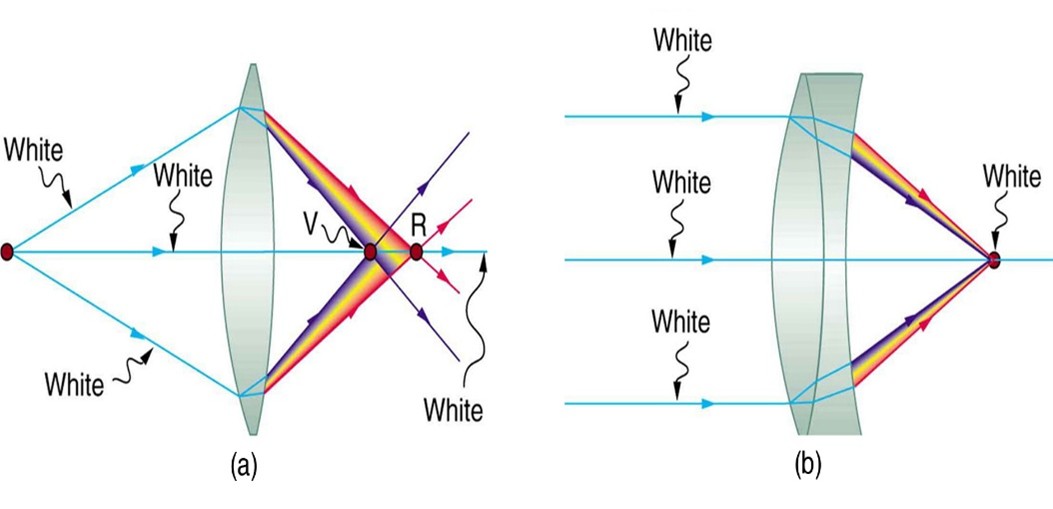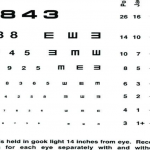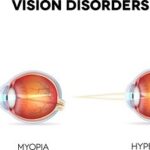Introduction:
Aberrations are optical imperfections that causes light rays to deviate from their intended path leading to blurry or distorted images. They are of two types:
Spherical aberration: Spherical aberration occurs when peripheral light rays focus differently than central rays through a lens or cornea which results in blurred vision specially under low light condition.
Chromatic aberration: Chromatic aberration are caused by different wavelengths of light focusing at
different points. It creates colour fringes or halos around the objects.
Impact of aberration on vision:
Aberrations can affect visual performance in low luminance and reduced contrast conditions. For example, higher order aberrations (HOA) can increase depth of focus (DOF) while decreasing visual acuity.
Chromatic aberration occurs because of the dispersion of optical media, where for typical materials the refractive index decreases with increasing wavelength. Longitudinal chromatic aberration (LCA – also known as axial chromatic aberration) occurs when different wavelengths of light focus at different distances from the lens. Transverse chromatic aberration (TCA – also known as lateral chromatic aberration) occurs when different wavelengths of light focus at different positions in the image plane. As a result of chromatic aberration, images contain so-called fringes of color and the image quality is degraded.
It has been known for more than 220 years that the image quality of the human eye is significantly degraded by chromatic aberrations. Recently, it was shown experimentally that correcting chromatic aberrations results in a 0.2- to 0.8-line improvement in visual acuity.
Spherical aberration (SA) is a dominant higher-order aberration in human eyes that creates local refractive errors proportional to the square of radial distance from the pupil center. As a result, the pupil margin can be as much as 3 diopters (D) more myopic than the pupil center for an 8-mm diameter pupil, typical of nighttime viewing. Inclusion of these more myopic regions as the pupil dilates, however, has little or no measurable impact on subjective refraction revealing that subjective refractions are dominated by the refractive state of the central pupil region.
When refracted with high contrast small letters, even large amounts of experimentally added positive SA (with fixed pupil size and no accommodation) produced only minor myopic shifts in subjective refractive errors, and added negative SA produces small hyperopic shifts. However, the magnitudes of these shifts varied significantly with the stimulus and the visual task used in the refraction procedure. For example, SA has its smallest effect when best focus is determined by optimizing letter acuity or by optimizing perceived quality of objects dominated by high spatial frequencies. However, the effect of SA is much larger when optimizing perceived quality of stimuli dominated by low spatial frequencies. The perceptual criterion used for optimizing focus is also important.
Myopic and astigmatic patients differ in terms of high-order aberrations and these differences cannot be equalized after contact lens application, but visual quality can be improved in both patients by using contact lenses.
Expansion of wavefront-sensing techniques redefined the meaning of refractive error in clinical ophthalmology. Apart from conventional lower- order aberrations (such as defocus and astigmatism), retinal images can be degraded by other higher-order aberrations (spherical aberration, coma, and trefoil). Third order aberrations and upper levels are called as higher-order aberrations and cannot be corrected by sphero-cylindirical correction. Since introduction of wavefront sensing and other ray tracing technologies, higher-order aberrations can be measured more accurately even in highly aberrated eyes. It is important to quantify higher-order aberrations because they
effect visual acuity and retinal image quality.
Conclusion:
Wearing contact lenses causes changes in the wavefront aberrations of the eye. The changes in wavefront
aberrations vary substantially from eye to eye. Developing contact lens technology promises much better retinal image quality by reducing higher-order aberrations. The type and design of contact lens can influence the patient’s quality of vision, as the lens modifies the overall optical characteristics of the visual system and the total amount of astigmatism. Different studies reported different results for both myopic and toric contact lenses about their effects on higher-order aberrations. Hong et al. suggested that soft contact lenses produce significant spherical aberrations, but some other studies reported that aspheric soft contact lenses provide better vision by reducing spherical aberrations. It is important to note that correction of higher-order aberrations is supposed to improve
retinal image quality but in practice lack of aberration does not mean best visual performance.










